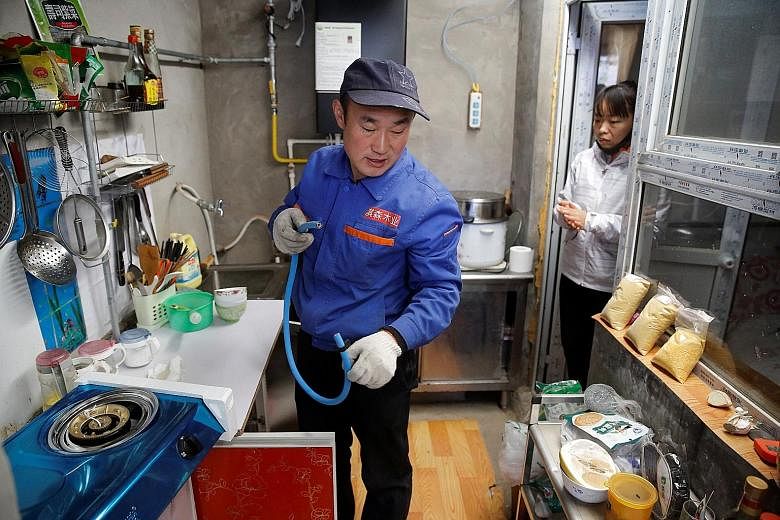China is ahead of schedule on its way to becoming the second-largest importer of liquefied natural gas.
The nation, already the world's top energy user, is on the verge of passing South Korea to become the No. 2 buyer of LNG behind Japan, as environmental measures and winter heating needs boost demand.
Tankers with total capacity of 33.6 million tonnes have visited China this year, just 1.7 million below South Korea's total, according to vessel-tracking data compiled by Bloomberg. The gap was more than 24 million tonnes in 2011.
"The battle for 2017 No. 2 importer is going to be close, but China will likely just make it," said Singapore-based Kerry-Anne Shanks, a Wood Mackenzie analyst, by e-mail. "This didn't look that likely for most of the year, as South Korean imports were so strong. But since July, China has been significantly higher than South Korea every month."
China's emergence as an LNG power is another sign that it is entering what Sanford C. Bernstein & Co. analysts called its "golden age of gas". Government efforts to reduce smog by promoting gas over coal at industrial sites have driven a 19 per cent increase in demand to October. That has outpaced increases in production, requiring more imports and creating shortages in some parts of the country as winter heating demand kicks in.
China's buying binge is coming earlier than some analysts expected.
Bloomberg New Energy Finance in September forecast that it would take China until 2019 to surpass South Korea. BNEF analyst Maggie Kuang said the two countries are seen as neck and neck this year.
They both still lag behind Japan, which imports more than China and South Korea combined after LNG imports rose following the 2011 Fukushima disaster that shuttered most of the nation's nuclear plants.
South Korea bought almost 33.5 million tonnes of LNG last year, compared with 26.2 million by China, according to their separate customs data. South Korea has imported about 30 million tonnes during the first 10 months of this year, with China at 29.2 million, the official data show.
At the beginning of the year, China seemed likely to grab second place by year-end, Ms Shanks said. But by mid-year, that looked less likely because South Korea was buying more LNG than expected. Some of that purchasing has gone into building up stockpiles in South Korea, Ms Shanks said, while in China the imports are going straight to use.
One example of that is the LNG tanker Cool Explorer, which arrived in South Korea's Gwangyang terminal on Nov 29 and loaded up with a cargo of LNG that had previously been unloaded into a storage tank there. That ship was sitting off the coast of Hainan island in south China as of Wednesday morning local time, ready to add to China's import total.
"The Chinese LNG demand is very serious and very achievable," Mr Hiroki Sato, executive vice-president at Japanese LNG importer Jera, said at a conference in Lisbon last week.
BLOOMBERG

